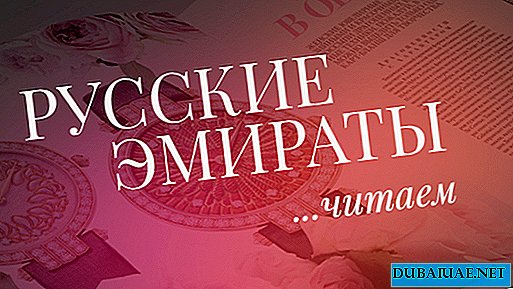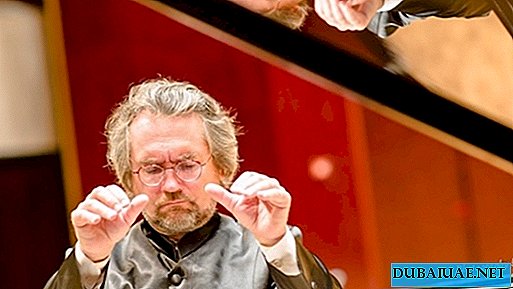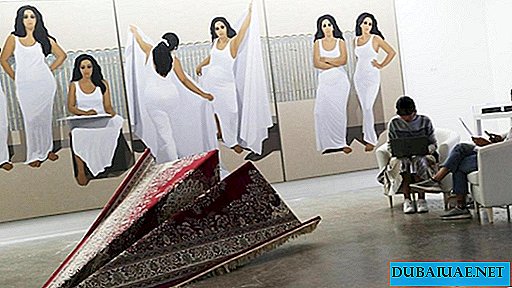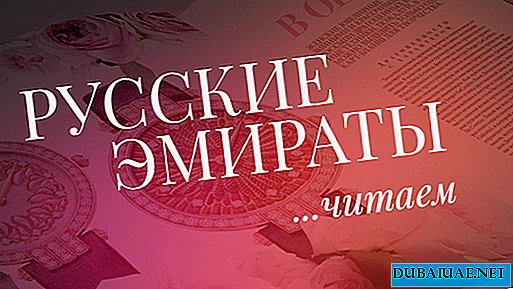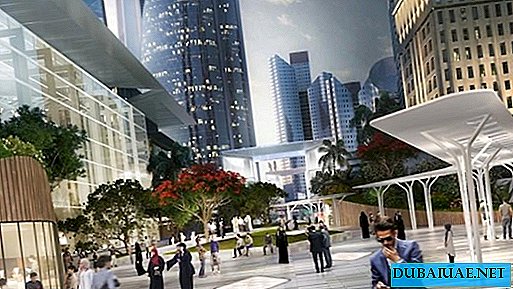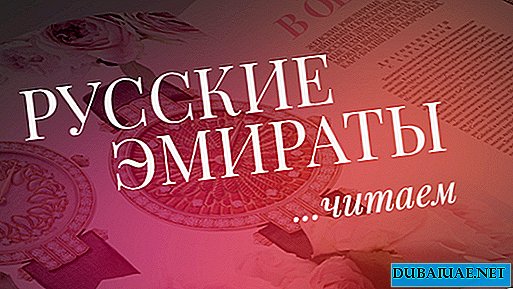 Events of this order, such as the Art Dubai Exhibition-Fair of Contemporary Art, fall into all possible categories: for everyone, for the elite and for everyone. The audience is appropriate: everyone, everyone and everyone. The bulk simply rejoices, looks, draws emotions and ideas, staring not so much at the exhibited works, but at the surroundings and specialists, whose appearance is often even more incomprehensible than their work.
Events of this order, such as the Art Dubai Exhibition-Fair of Contemporary Art, fall into all possible categories: for everyone, for the elite and for everyone. The audience is appropriate: everyone, everyone and everyone. The bulk simply rejoices, looks, draws emotions and ideas, staring not so much at the exhibited works, but at the surroundings and specialists, whose appearance is often even more incomprehensible than their work.
Art Dubai 2010
Madinat Jumeirah, March 17-20, 2010
The largest art fair in the region, which has been held since 2007. More than 70 art galleries from 30 countries. Special section of museum quality works.
A powerful emphasis on the work of talent from the Middle East. A rich program of events. This year, Art Dubai was held in collaboration with Abraaj Capital holding, with the support of Van Cleef & Arpels and Madinat Jumeirah. According to the organizers, over 3,000 people visited the fair over 3 days.
Art Dubai 2010 became part of the Contemparabia project, a two-week event linking several art centers in the region. The beginning of Contemparabia was laid in Beirut, then the project moved to Qatar Doha, where the Museum of Islamic Art opened, and ended with Art Dubai in Dubai and Sharjah Biennial in Sharjah.
Gallery owners and specialists, separated from the masses by the original form of clothes and laptops from Apple, go about their business: discuss new products, promote their wards, drink champagne and often with pain in their eyes look at the masses who do not understand what such and such is, for example, in plastic shorty robots placed around the podium or intricately concave-convex pieces of metal attached to the wall. Unclear? But this is art! Good ... We absorb and develop ...
Estimates are also different. Someone with a grin notes that Art Dubai is an attempt by the Arab sheikhs to “pull the ears” of art in the desert and to buy a warm bohemian place for its petrodollars. Someone blames them, accusing people of white of lack of taste and the desire to buy everything and more. Someone convicts gallery owners of indulging the same sheikhs and "fitting" the exhibited works to demand: the more glitter and chic - the higher the probability of being sold. In general, a lot of things are discussed on the sidelines. Among the visitors it is, most often, sheikhs and petrodollars, the crisis and prices, and also the work itself. And what role these contemporary sheikhs play in contemporary "ultra-conservative" politics.
For local creators and gallery owners promoting them, Art Dubai is an opportunity to show themselves, share their world and go beyond the region. They often remain incomprehensible, especially those who live and work in Arab countries, and not in London, Paris and New York, or in Iran. And this is not surprising. If the inhabitants of cultural capitals or Iranians, for example, absorbed the rich heritage of countries with history and culture, then local comrades, like children, are direct, often inept and simple. There is practically nothing to feed on them, except for the year-round sun and God's own talent. And, nevertheless, the one who does nothing is bad. In this regard, Art Dubai does its job, which for a year remains a good platform for regional talents and exhibiting talents from other countries. And sheikhs ... sheikhs have a special "thank you" for not sparing money for the development of the poor cultural component of the region in times of crisis. We will leave them for the sim.
 For me, as for a person somewhere between those who are “in the subject” and those who are “not in the subject”, Art Dubai is most likely an opportunity to once again think about what contemporary art is and by what criteria to evaluate it. If with classical art everything is more or less clear, then in contemporary art everything is more complicated.
For me, as for a person somewhere between those who are “in the subject” and those who are “not in the subject”, Art Dubai is most likely an opportunity to once again think about what contemporary art is and by what criteria to evaluate it. If with classical art everything is more or less clear, then in contemporary art everything is more complicated.
The current art is not so tightly connected with the idea of beauty as before. Sometimes it is even far from her. Most likely - this is a way of reflecting thoughts about life, the world, oneself and current events. Content is important. Form, too, is the ability to articulate content. But the modern form is all that can be created by man, and not just, for example, painting or drawing. Technique is important. Logic is important. Reflecting the context in which the work is created is also important, as is the ability of the author to clearly explain what, how and why.
Thus, the deeper the content and the clearer the form of its presentation, the more highly artistic today any work of a creative person - it does not matter, in paints, in stone or plastic. And, nevertheless, the most important thing is the energy of work, when the content and form penetrate the soul, brain and heart, make you feel, feel and think. Not just admire, but respond at all levels of perception. And all these are very subjective things. Objective is the assessment of work in monetary terms, the recognition of the public and experts. And then, the work is exhibited in the museum or not. Therefore, everything that was presented at Art Dubai could be subjectively evaluated in terms of sales. Let us leave objective assessments to the experts: for this they studied and work. We, mere mortals, are left to watch the illustrations and, as they say in Odessa, “make an opinion”.
But, undoubtedly, one thing - in the next year, 2011, be sure to devote several hours, or better, a whole day, and devote them to Art Dubai 2011. Such interesting events in all respects are simply impossible to miss!
Van Cleef & Arpels. The poetry of time.
The famous watch brand Van Cleef & Arpels this year timed its second participation in Art Dubai to the release of a new book, The Poetry of Time. In a separate room where the Van Cleef & Arpels exposition, specially created for the fair, was located, the story of more than a century-long history of creating magnificent watches, each of which is a real work of art, was told. Eternal guardians of infinite time. Amazing, truly highly artistic creations that could not be better fit into the atmosphere of the contemporary art fair: all these weightless butterflies, the finest laces, amazing miniatures on such small dials.
Van Cleef & Arpels brought to Dubai an amazing collection of vintage watches of their own production. To create watches as works of art, Van Cleef & Arpels began in the 20s of the last century (the legendary French house itself was founded in 1906, ten years after the wedding of the offspring of two families engaged in the sale of precious stones, Estelle Arpels and Alfred Van Clif). At first it was a watch richly encrusted with precious stones on a chain, fastened to clothes. Then, in the early 1930s, Van Cleef & Arpels created a hidden watch for ladies: then the prerogative to “own” time belonged entirely to men, and the woman’s wearing a watch was extremely bad form. Therefore, the watch was "hidden" in miniature ladies evening bags "minaudiere", somewhere between the mirror and lipstick. The “minaudiere” by Van Cleef & Arpels themselves are so good that they are absolutely relevant today. Also in the 1930s, Pierre Arpels created the famous Cadenas ladies watch, which was intended for the Duchess of Windsor, Yes To maintain the reputation of a high-ranking lady in society, a wristwatch was created with a dial inscribed in jewelry in a bracelet and visible only to its owner. This watch is invariably popular to this day, almost 100 years later.
To maintain the reputation of a high-ranking lady in society, a wristwatch was created with a dial inscribed in jewelry in a bracelet and visible only to its owner. This watch is invariably popular to this day, almost 100 years later.
Since then, watches from Van Cleef & Arpels have met two requirements: the highest quality of the movement and the unique, incomparable design of the dial or the watch itself as a whole. Exactly about this poetic compilation.
Simple but refined men's watch Monsieur Arpels. Elegant Lady Arpels with lace diamonds on the dial. Delicate Charms and sophisticated Vintage Alhambra in the shape of a recognizable signature “flower” or a bracelet from them, which looks like expensive jewelry, which, however, is. All this is an enduring classic.
But Van Cleef & Arpels went further, creating not only the so-called "jewelry watches", but also watches with hand-drawn miniatures on the dial, in technique and partition enamel, decorated with mother-of-pearl precious stones. The master of painting Van Cleef & Arpels is right in the pavilion, and all visitors can see how delicate the work of designing and designing the dials is: they are pricked with a fine brush using a microscope. The process itself seems no less fabulous than motives, and no less jeweler than works by Van Cleef & Arpels.
It is not for nothing that the descendants of the first Arpels and Clifs claim that their watches are the fruit of exceptional watchmaking and High (with a capital letter) jewelry art. Confusing Van Cleef & Arpels with others is simply impossible!
The global art forum
The international art forum, which traditionally takes place as part of Art Dubai, has established itself as the most influential platform for discussing the pressing problems of the art industry in the Middle East. This year, the main topic was a vague time of change: 4 days, an international audience tried to answer the eternal question - "What to do?" or, as it will be more correct to say in the context of contemporary art, "What to do next?"
The general theme of the Art Dubai 2010 art forum, “Critical Moments,” spoke for itself. It was not so much about the economic crisis, but about the prospects and possible directions for the development of the art market in changing conditions, both economic and socio-cultural, as well as changes in the market itself and contemporary art as a whole. Specialists and the public discussed the topic of the development of modernism in Iran, and the best options for patronage of art on the part of business, and contemporary art of Saudi Arabia, and ways to transfer private collections to museums, and the "Palestinian syndrome", and much more.



